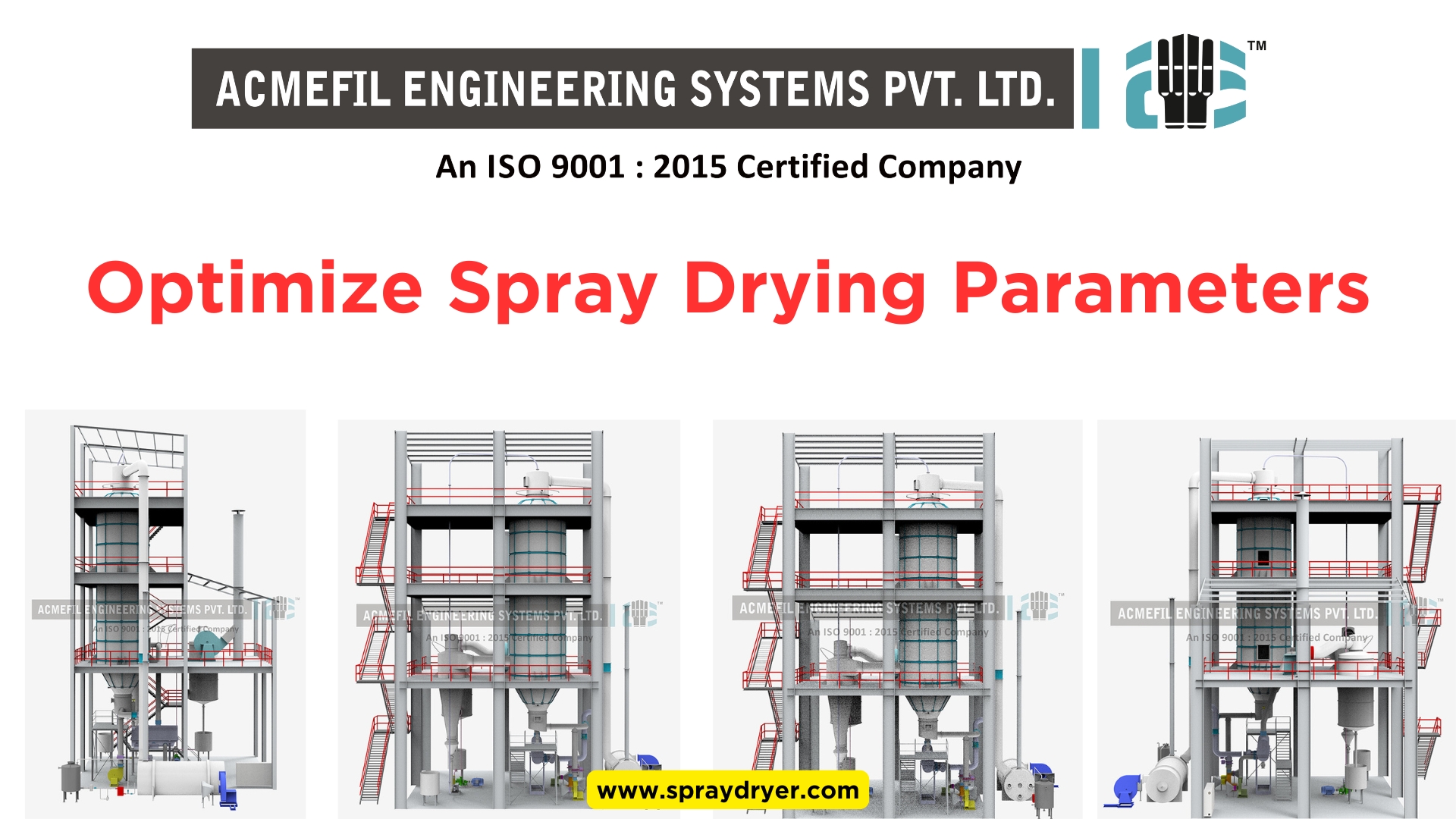Spray drying is a critical process in many industries, including pharmaceuticals, food processing, and chemicals. To achieve the desired product quality, it’s essential to optimize spray drying parameters effectively. This blog post will guide you through the essential parameters to consider and how to adjust them to improve efficiency, yield, and product consistency.
Understanding Spray Drying
Before diving into the optimization process, it’s important to understand the basics of spray drying. Spray drying involves the conversion of liquid feed into dry powder by spraying the liquid into a hot drying medium. The process is commonly used for creating powders with specific characteristics, such as particle size, moisture content, and flowability.
The key parameters influencing the spray drying process include inlet temperature, outlet temperature, feed rate, atomization, and airflow. Each of these factors plays a significant role in the final product quality, and optimizing them requires a balance that meets the specific needs of the product being dried.
Inlet and Outlet Temperatures
Inlet Temperature
The inlet temperature is the temperature of the drying air when it enters the spray dryer. This is one of the most crucial parameters because it directly affects the rate of evaporation and, consequently, the drying efficiency.
- Optimization Tip: Higher inlet temperatures generally increase the drying rate, which can be beneficial for heat-stable products. However, for heat-sensitive materials, high temperatures might degrade the product. To optimize, start with the recommended temperature range for your product and adjust incrementally while monitoring the product quality and yield.
Outlet Temperature
The outlet temperature, on the other hand, is the temperature of the air as it exits the spray dryer. It’s a critical parameter for determining the final moisture content of the product.
- Optimization Tip: Maintain the outlet temperature within a range that ensures the desired moisture content without compromising the product’s quality. Too low an outlet temperature may result in an overly moist product, while too high a temperature may cause over-drying and potential degradation.
Feed Rate
The feed rate refers to the speed at which the liquid feed is introduced into the spray dryer. This parameter is closely linked to both the inlet and outlet temperatures.
- Optimization Tip: A lower feed rate generally allows for more thorough drying, but it can reduce throughput. Conversely, a higher feed rate increases throughput but may result in incomplete drying if the temperatures are not adjusted accordingly. Optimize the feed rate by balancing it with the inlet temperature to achieve the desired moisture content and product consistency.
Atomization
Atomization is the process of breaking down the liquid feed into fine droplets, which significantly affects the drying process and final product characteristics.
Atomizer Type
The choice of atomizer (centrifugal, pressure nozzle, or two-fluid nozzle) plays a crucial role in determining the droplet size and distribution.
- Optimization Tip: Select the atomizer type based on the desired particle size and product characteristics. Centrifugal atomizers are suitable for larger particles, while pressure nozzles are better for finer particles.
Atomization Pressure
The pressure at which the liquid feed is atomized also impacts droplet size and drying efficiency.
- Optimization Tip: Higher atomization pressure typically results in smaller droplets, leading to faster drying but potentially higher energy consumption. Optimize by adjusting the pressure to balance between drying efficiency and energy usage.
Air Flow
Airflow within the spray dryer is another critical parameter that influences drying efficiency and product quality.
Airflow Rate
The rate of airflow affects the residence time of the particles in the dryer and the overall drying rate.
- Optimization Tip: Adjust the airflow rate to ensure that particles remain in the drying chamber long enough to achieve the desired moisture content. Too high an airflow may lead to under-drying, while too low a rate can cause over-drying and agglomeration of particles.
Air Distribution
Proper air distribution is essential to ensure uniform drying and prevent the formation of hot spots or uneven product quality.
- Optimization Tip: Ensure that the air distribution system is well-maintained and optimized for the specific product being dried. Adjust the position and configuration of the air distribution plates or nozzles to achieve uniform airflow across the drying chamber.
Monitoring and Control Systems
To achieve optimal spray drying parameters, it’s essential to have robust monitoring and control systems in place. These systems can provide real-time data on key parameters such as temperature, humidity, and pressure, allowing for quick adjustments and fine-tuning of the process.
- Optimization Tip: Implement automated control systems that can adjust parameters in real-time based on feedback from sensors and other monitoring equipment. This not only improves efficiency but also ensures consistent product quality.
Product-Specific Adjustments
While the general principles of spray drying optimization apply across various industries, it’s important to consider the specific characteristics of the product being dried. Factors such as viscosity, solid content, and heat sensitivity will influence the optimal settings for each parameter.
- Optimization Tip: Conduct pilot trials with small batches to determine the ideal settings for each parameter before scaling up to full production. This approach allows for fine-tuning of the process without risking large quantities of product.
Conclusion
Optimizing spray drying parameters is a delicate balance that requires careful consideration of multiple factors. By systematically adjusting and monitoring parameters such as inlet and outlet temperatures, feed rate, atomization, and airflow, you can achieve the desired product quality and maximize efficiency. Remember to use product-specific adjustments and leverage modern monitoring and control systems to refine the process further.
For manufacturers and engineers looking to improve their spray drying process, understanding and optimizing these parameters is crucial. With decades of experience in spray dryer technology, Acmefil Engineering Systems Pvt. Ltd. is here to support you with expert advice and high-quality equipment tailored to your specific needs.
By following the guidelines provided in this article, you’ll be well on your way to mastering spray drying optimization and producing superior products consistently.




